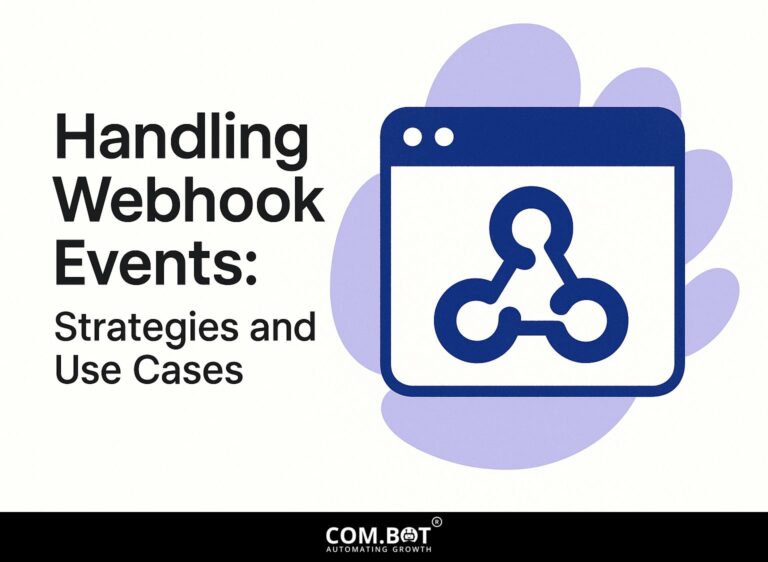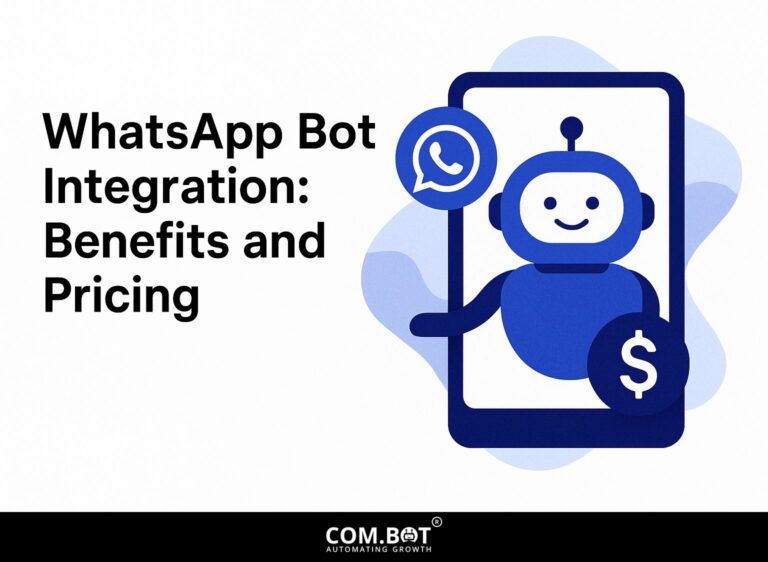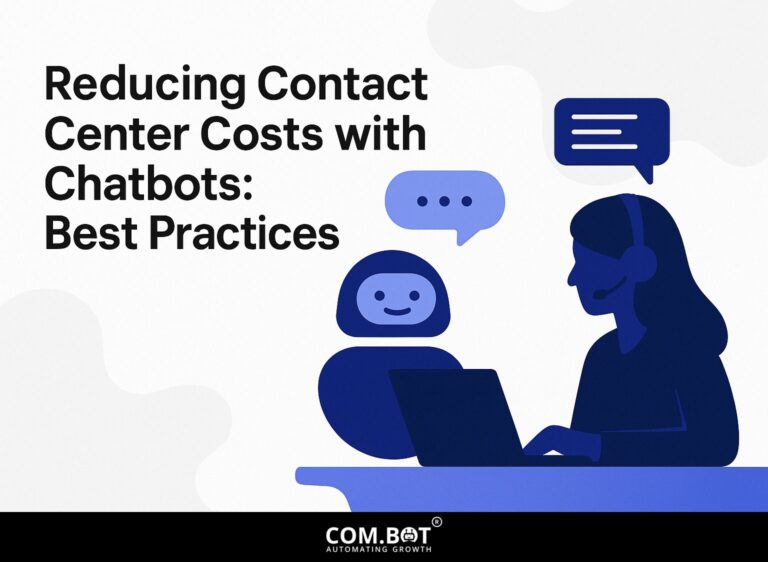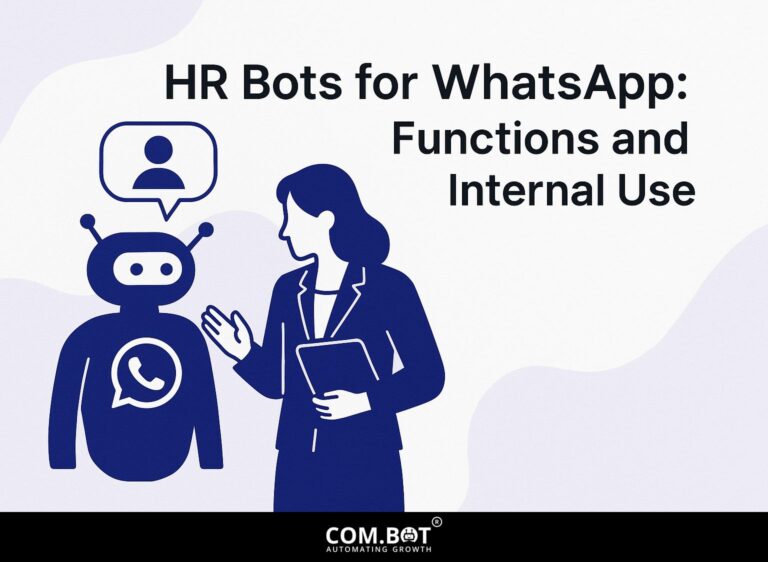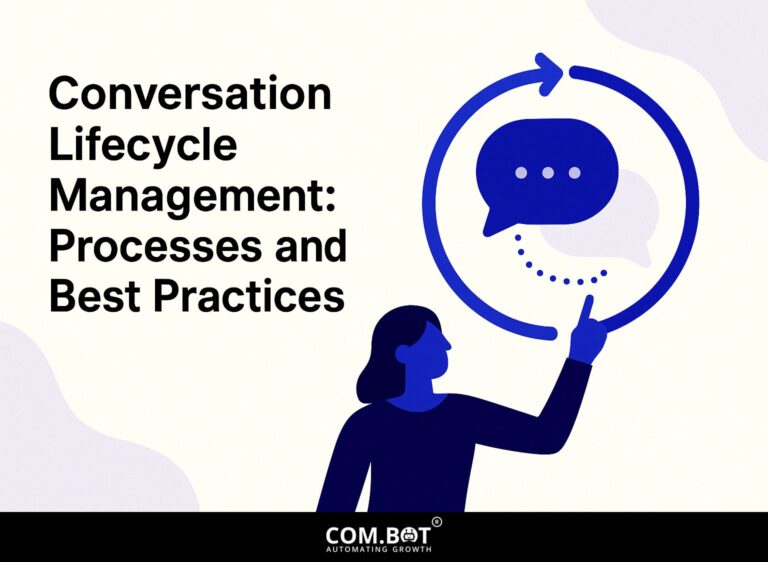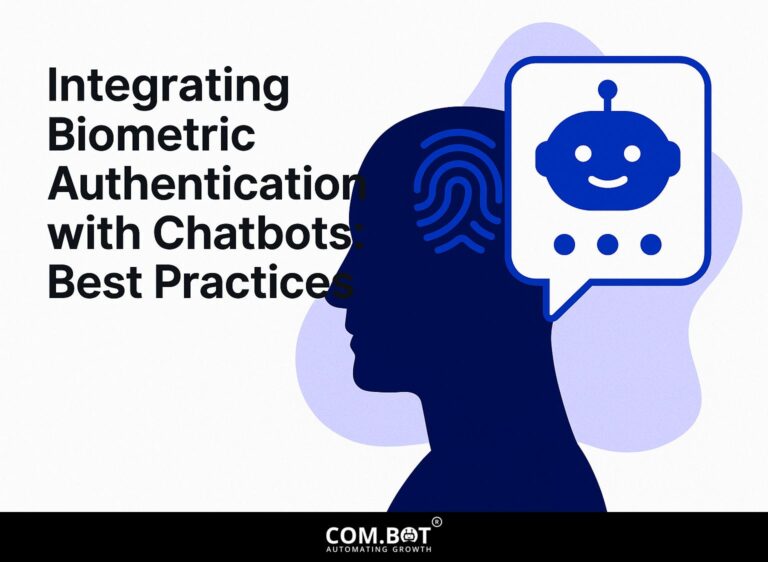Building Intent-Based Chatbots: Benefits and Applications

Creating chatbots focused on user intent is changing the way people interact. By using machine learning and natural language processing, these chatbots are great at figuring out what users want, improving chatbot recognition skills. This article explores the benefits and varied uses of intent-based chatbots, highlighting how they change customer service, e-commerce, and healthcare. Learn how using artificial intelligence in your communication plan can improve user experiences and make processes more efficient.
Key Takeaways:
- Intent-based chatbots make user experience better by recognizing and answering natural language, making processes more efficient and lowering costs across different industries.
- Main features like NLP and grasping the situation help chatbots accurately figure out what users mean and provide personalized interactions.
- Upcoming developments in AI will improve intent-based chatbots, allowing them to better connect with users individually. As a result, they will become a key part of current communication methods.
- 1 Key Chatbot Statistics and Trends
- 2 Key Chatbot Statistics and Trends
- 3 Benefits of Intent-Based Chatbots
- 4 Key Features of Intent-Based Chatbots
- 5 Applications Across Industries
- 6 Challenges in Building Intent-Based Chatbots
- 7 Future Trends in Intent-Based Chatbots
- 8 Frequently Asked Questions
- 8.1 1. What are intent-based chatbots and how do they work?
- 8.2 2. What are the benefits of using intent-based chatbots?
- 8.3 3. How can intent-based chatbots be used in businesses?
- 8.4 4. What are some examples of companies using intent-based chatbots?
- 8.5 5. Can intent-based chatbots be customized for specific purposes?
- 8.6 6. How can I get started with building an intent-based chatbot?
1. Definition and Overview
An intent-based chatbot is a program that uses natural language processing (NLP) to understand user input and give appropriate responses. These chatbots function by classifying user intents, allowing them to handle diverse queries effectively.
Examples of common intents include:
- product inquiries, where users ask about features or prices;
- customer feedback, allowing users to express opinions or issues;
- order tracking, providing updates based on user requests.
For instance, an e-commerce chatbot might respond to a query like “What is the status of my order?” with real-time tracking details.
Tools like Dialogflow or Rasa help build these advanced chatbots, allowing businesses to improve customer interaction with ease.
2. Importance in Modern Communication
With the rapid growth of digital technology, businesses focus on quick communication tools to meet changing user needs and make customer interactions better.
Intent-based chatbots have become important tools in this change in communication. By providing immediate responses, they cater to a significant user preference; studies show that 70% of consumers prefer chatbot interactions over traditional support methods.
For example, companies like Sephora use chatbots to offer quick beauty tips, which speeds up customer service. Using platforms like Drift or Zendesk helps businesses improve service by studying conversations and making replies more accurate. This application improves user experience and increases interest and satisfaction.
Key Chatbot Statistics and Trends
Key Chatbot Statistics and Trends
As businesses increasingly rely on AI technology, understanding its various applications becomes crucial. Curious about how AI bots can be harnessed for business intelligence? Our detailed guide provides insights into the transformative potential AI holds for data-driven decision-making.
Consumer Interaction: Positive Experience with Chatbots
Consumer Interaction: Consumer Engagement
Market and Adoption: Chatbot Market Growth
Market and Adoption: Adoption and Usage
The Key Chatbot Statistics and Trends give a clear summary of how chatbots are changing how consumers interact and their market growth The data highlights the significant impact of chatbots on user experience, engagement, and adoption by businesses worldwide.
Consumer Interaction metrics reveal that chatbots are generally well-received by users. Specifically, 80% of consumers report having a positive interaction with chatbots, while an additional 14% describe their experience as very positive. The high satisfaction rate shows that chatbots are good at giving fast, correct, and pleasing answers, making customer service better.
- Consumer Engagement: In terms of engagement, 35% of Americans use chatbots for fun, showing that chatbots are both useful and interesting for users. Furthermore, 62% of consumers prefer using a chatbot over waiting for a human agent, highlighting the efficiency and convenience offered by AI-driven interactions.
Market and Adoption Metrics show the financial growth and increasing use of chatbots in recent years. The global chatbot market value was $6.3 billion in 2023 and is projected to grow exponentially to $27.3 billion by 2030, demonstrating a strong and expanding market.
- Adoption and Usage: As of now, there are approximately 987 million AI chatbot users globally, with 500 million of these using Meta’s AI chatbots. This significant user base reflects broad consumer acceptance and reliance on chatbot technology. Additionally, 69% of businesses have adopted AI chatbots, indicating a widespread recognition of their value in enhancing customer service operations, streamlining processes, and reducing operational costs.
Overall, the Key Chatbot Statistics and Trends Data shows that chatbots are improving how businesses interact with customers and increasing their use across many sectors, leading to significant market expansion. As chatbots keep getting better, they will likely play an even more important part in both consumer and business areas.
Benefits of Intent-Based Chatbots
Intent-based chatbots provide many advantages that greatly improve work tasks and customer communication, making them an important tool for companies. (our detailed guide on AI Bots for Customer Support highlights additional benefits)
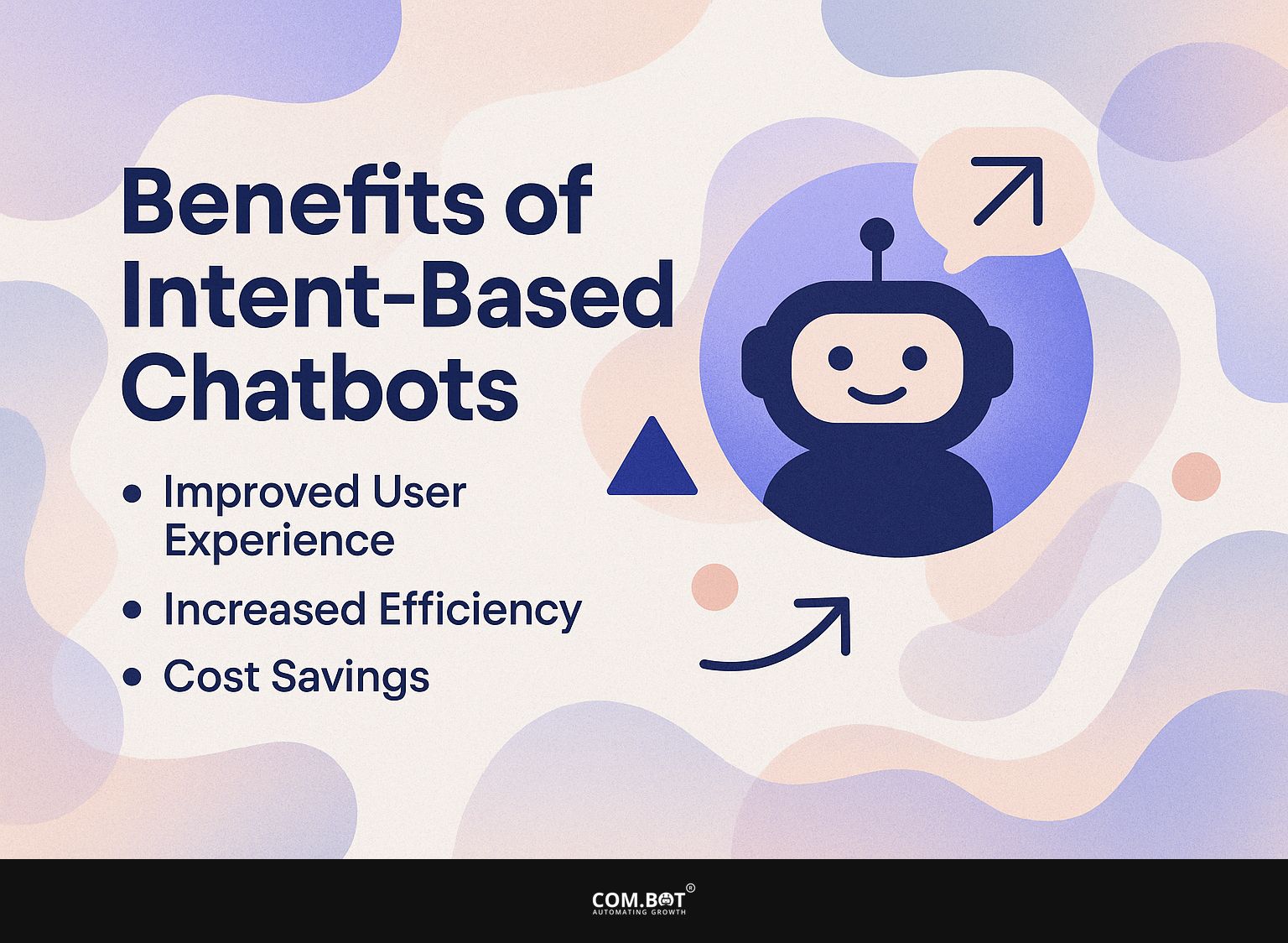
1. Improved User Experience
By knowing what users like, chatbots can have personalized talks that greatly increase how happy users are with their experience.
For example, a chatbot that can interpret user questions about product availability can reply with specific details about current stock or other options. Using tools like Dialogflow or Chatfuel, organizations can set up predefined responses based on common questions.
Studies show that chatbots that understand user needs can improve satisfaction by up to 30%, as users get answers to their questions quickly and clearly. Machine learning allows chatbots to improve with use, providing a smoother experience for users.
2. Increased Efficiency
Implementing intent-based chatbots can reduce response times from an average of 5 minutes to under 1 minute, greatly enhancing operational efficiency.
In a case study, a retail company integrated a chatbot to manage customer inquiries, which resulted in a 20% decrease in operational costs within six months. The chatbot quickly answered common questions, which let human agents deal with more complicated problems.
To set up this system, companies can use tools like Dialogflow or Microsoft Bot Framework. Begin by pinpointing typical customer questions, then create conversation paths in your selected platform, allowing the bot to respond instantly and greatly simplify the customer service process.
3. Cost Savings
Businesses have seen up to 60% cost reduction in customer support by using chatbots that understand user intent, showing clear financial benefits.
For instance, a retail company implementing a chatbot saved $100,000 annually on support costs by automating responses to common inquiries. Traditional support operations, requiring multiple full-time staff members, typically range from $50,000 to $70,000 each per year.
On the other hand, a strong chatbot option might cost about $15,000 to $20,000 each year. This important difference shows how using chatbots makes handling customer conversations more efficient and enables companies to use their resources for expansion and new ideas.
Key Features of Intent-Based Chatbots
Knowing the main features of intent-based chatbots is important for companies that want to use successful conversation-based AI tools.
1. Natural Language Processing (NLP)
Natural Language Processing (NLP) serves as the backbone of intent-based chatbots, enabling them to comprehend and process user language effectively.
Tools like Google Dialogflow and Microsoft Bot Framework help break down and understand sentences using NLP in chatbots.
Dialogflow, for instance, uses machine learning to identify user intents and extract entities from conversations. This allows it to differentiate between ‘book a flight’ and ‘cancel a ticket.’
Sentiment analysis improves user experience by changing responses according to the emotions identified. Developers can include these features to create chatbots that understand the situation and provide clearer, helpful responses, leading to better user satisfaction.
2. Contextual Understanding
Recognizing the situation helps chatbots understand user actions, allowing for better interactions and answers that make sense.
For instance, a customer service chatbot that remembers previous inquiries can tailor its replies accordingly. If a user previously asked about a warranty, the bot might proactively offer information related to product returns on subsequent interactions.
Popular services like [Dialogflow](https://dialogflow.com) and [Microsoft Bot Framework](https://dev.botframework.com) provide tools that follow and store conversations, making users happier. These chatbots use session management to customize each interaction, which leads to increased user participation and problem-solving rates.
Applications Across Industries
Chatbots that understand user intentions are used in many industries to improve service and connect with users in different areas.

1. Customer Service
In customer service, chatbots handle inquiries ranging from transaction intent to user feedback, ensuring timely and effective responses. These intelligent systems can greatly reduce response times, often replying within seconds, while older methods might take a few minutes.
For instance, a case study showed that a retail company employing chatbots saw a 30% increase in customer satisfaction ratings within three months.
By using platforms like Zendesk or Drift, businesses can set up systems to handle common questions automatically, allowing human agents to focus on more difficult problems. This makes the service work better and improves how customers feel about it.
2. E-commerce
E-commerce platforms use chatbots to quickly give product information and help customers with their shopping experience. These chatbots improve conversations by providing personalized guidance, which can greatly increase sales conversions.
For instance, a study by HubSpot found that businesses employing chatbots experienced a 25% increase in sales. These automatic systems work nonstop, allowing customers to get help anytime, which creates trust and leads to them coming back.
By using tools like Zendesk or Drift, retailers can monitor customer interactions, study behavior patterns, and change strategies as needed, which leads to better conversion rates and happier customers.
3. Healthcare
Healthcare chatbots offer services such as appointment scheduling and symptom checking, improving patient engagement and information retrieval. These chatbots can help patients remember to take their medication and follow their care plans.
For instance, the Chatbot developed by Buoy Health effectively triages patient symptoms and directs users to the appropriate care, reducing unnecessary ER visits.
The Cedar chatbot improves billing by responding to patient questions about costs and insurance. Healthcare providers can add chatbots to their platforms to simplify tasks and improve patient communication, leading to better health results.
Challenges in Building Intent-Based Chatbots
Even though intent-based chatbots offer great advantages, some problems need solving for them to work well.
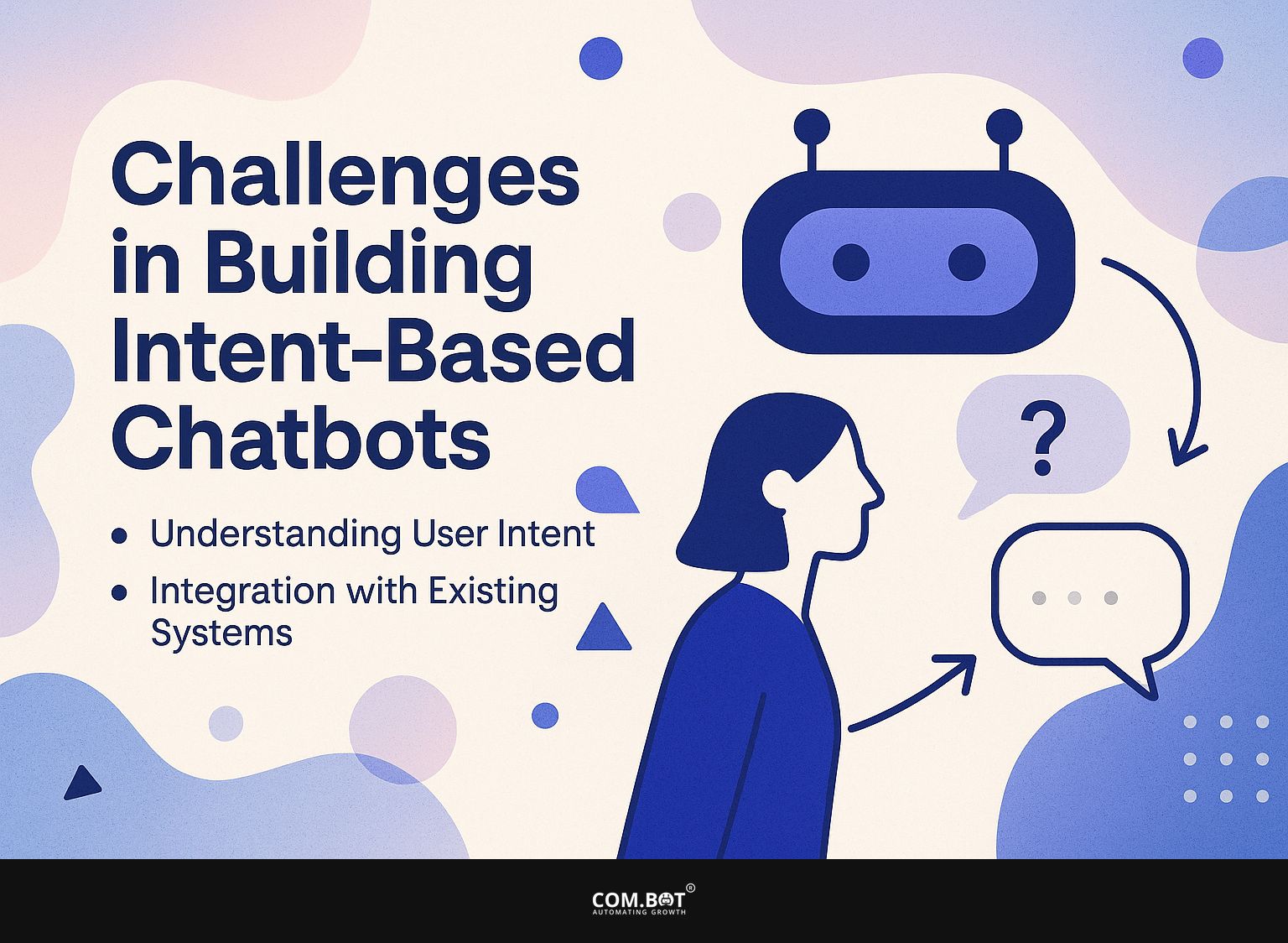
1. Understanding User Intent
Knowing what users need is important; mistakes can result in poor experiences for them. Training datasets are essential for improving chatbot accuracy. For instance, if a dataset lacks diverse examples of user queries, the chatbot may struggle to comprehend variations in phrasing.
Common pitfalls include using outdated training data or failing to account for context. Solutions involve regularly updating your dataset with new interactions and incorporating context-aware algorithms.
You can make your chatbot’s interactions better by using tools like Google’s Dialogflow or Microsoft Bot Framework. These tools help your chatbot understand and respond to human language, allowing it to satisfy user needs more effectively as time goes on.
2. Integration with Existing Systems
Integrating intent-based chatbots with existing systems can pose challenges, often requiring extensive customization and testing.
To make the integration smooth, start by outlining your work processes and spotting any possible delays. Use application programming interfaces (APIs) to link your chatbot with CRM tools, allowing coordinated communication with customers.
Check the integration step-by-step: first, check how the chatbot works in a test setting before rolling it out on different platforms. Ask users for their input to make gradual improvements, fixing any confusion or issues that come up during first interactions.
Future Trends in Intent-Based Chatbots
Intent-based chatbots are set for major improvements, as new technologies improve their functions and user interaction. These advancements are particularly exciting in the realm of multilingual support, where AI chatbots offer substantial benefits by enhancing communication across diverse languages.
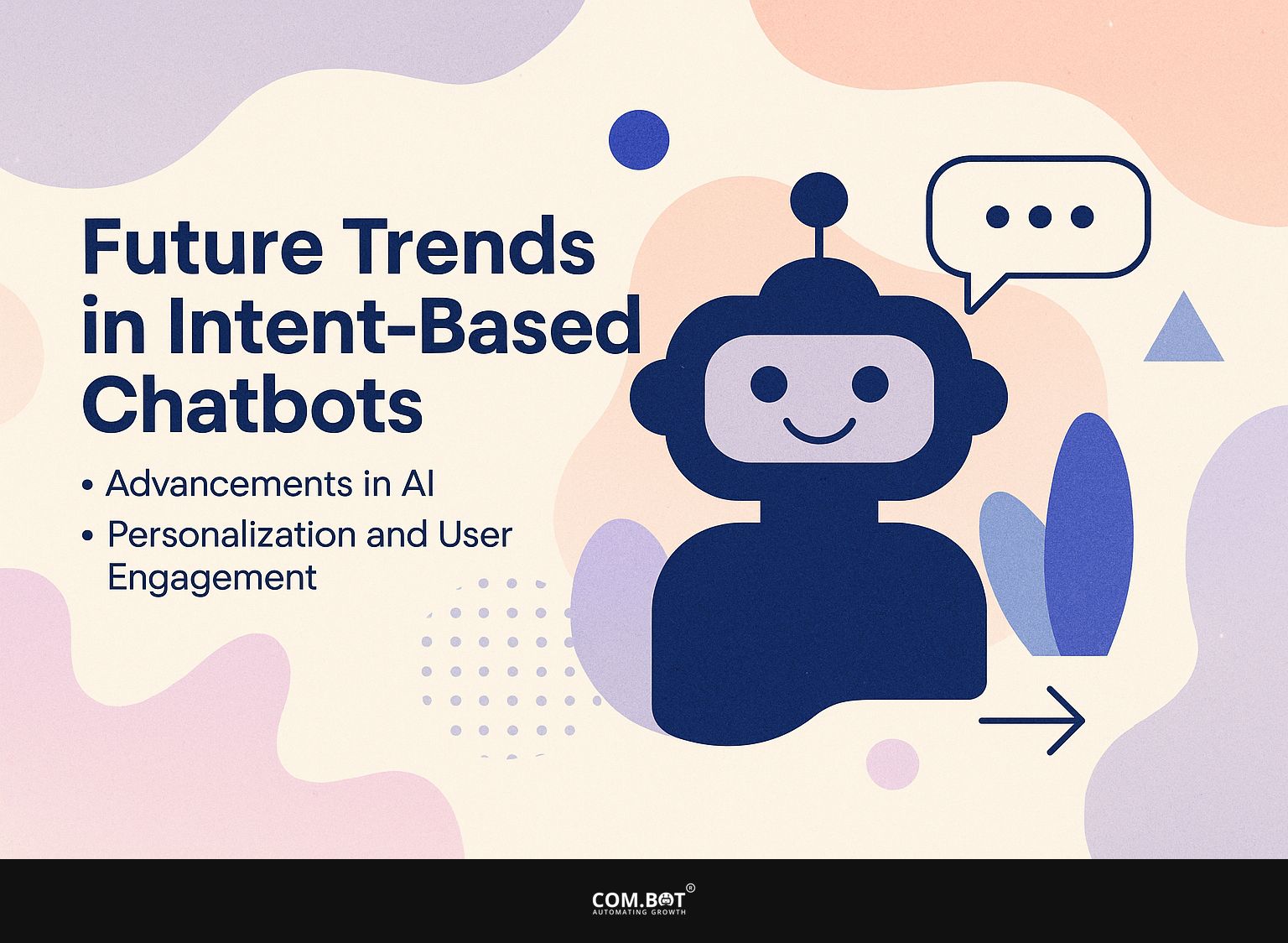
1. Advancements in AI
Improvements in AI, such as better machine learning methods and language processing techniques, will improve how intent-based chatbots work. These updates help chatbots provide more accurate responses by recognizing user questions, using tools like Google’s Dialogflow that connect with various messaging services.
Rasa offers free tools that help companies build custom chatbots to improve their communication. Companies adopting these advanced chatbots report increased customer satisfaction and engagement, as the bots learn from previous interactions and improve over time.
Using these technologies, organizations can make their chatbots more helpful and aware of the situation, which will improve the user experience.
2. Personalization and User Engagement
Businesses are working more on personalizing chatbot conversations because it boosts user involvement and happiness. To improve personalization, companies are using strategies like examining how users behave and combining their likes and dislikes.
Starbucks has a chatbot that suggests drinks to customers by looking at their past orders and what they type in. HealthTap’s AI-driven chatbot gives health guidance based on a person’s symptoms and medical history.
To apply this, companies should use tools like Dialogflow to create individual responses and use customer data to tailor interactions, so users feel noticed and valued.
Frequently Asked Questions
1. What are intent-based chatbots and how do they work?
Intent-based chatbots are AI programs that recognize and reply to what users want or ask. They employ techniques that allow computers to understand human language and use advanced computer programs to examine what users say and give suitable and correct replies.
2. What are the benefits of using intent-based chatbots?
Chatbots that focus on user intent provide many advantages, such as making processes faster and making customers happier. They can handle multiple conversations simultaneously, reducing wait times for users. They can get better over time, giving more precise and fitting answers.
3. How can intent-based chatbots be used in businesses?
Intent-based chatbots have a wide range of potential applications in businesses, from customer service and support to sales and marketing. They can take care of regular duties and questions, allowing human workers to concentrate on more difficult and important work. They can also help with getting new leads and keeping customers interested, which boosts overall business results.
4. What are some examples of companies using intent-based chatbots?
Many companies are already utilizing intent-based chatbots in their operations. For example, Amazon uses chatbots to handle customer inquiries and track packages, while Sephora’s chatbot helps customers find and purchase beauty products. Other companies, such as Bank of America and H&M, also use chatbots to improve their customer service and engagement.
5. Can intent-based chatbots be customized for specific purposes?
Yes, intent-based chatbots can be customized and trained for specific purposes and industries. This includes using terms specific to the industry and knowing what customers often ask. As they keep learning and getting better, they can be more customized for a business’s specific needs.
6. How can I get started with building an intent-based chatbot?
There are various chatbot platforms and tools available for building intent-based chatbots, many of which require no coding experience. These platforms often provide templates and tutorials to help users get started. It’s important to clearly state the goals and purpose of the chatbot and regularly check and improve how it works to make sure it meets user needs.
